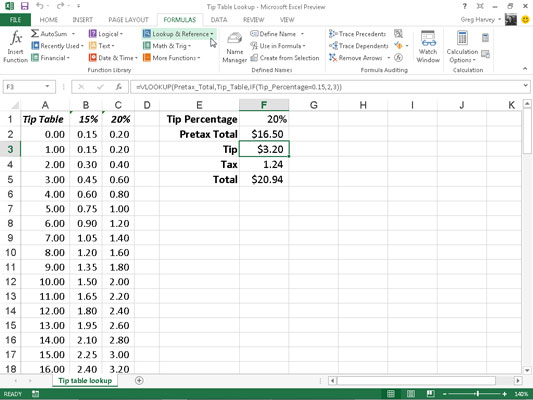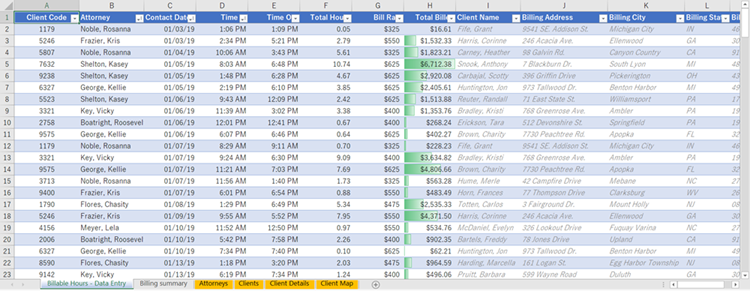

The first argument will be the VLOOKUP value.

First, copy the price and RAM details to a new location, and specify your lookup value.If not, VLOOKUP will return incorrect values. We need to sort the first column in ascending order. So, let's use the Approximate Match to find the solution. Also, we know this value is not present in the table. In the example below, we use the VLOOKUP function to find out how much RAM specification a laptop priced 1300 EUR has.
#HOW TO USE VLOOKUP IN EXCEL 2013 HOW TO#
How To Find Approximate Match Using VLOOKUP?Īpproximate Match works by finding the next largest value that is lesser than the lookup value, which we specify.

With the help of VLOOKUP in Excel, we can look for an approximate match as well. An N/A error is displayed in case the exact value is not found. Here, the value is set to FALSE for the VLOOKUP function to return an exact match for the value. The last argument is a Boolean Expression.This tells us what value should be returned from the row that we are looking up for. The third argument specifies the Column Index number.As you can see, the table location is A2:F11. We specify the location of the table in the second argument.So, we set the first parameter as the lookup value, which is the cell H5. In the example below, we are using the VLOOKUP function to find the value of the exact match of ID from the given table.Let’s take a look at how to do this with the help of an example: VLOOKUP makes it effortless to look for an exact match from the table. How To Find an Exact Match Using VLOOKUP? If the value is TRUE, then we are looking for an approximate match. range_lookup: This has two options if the value is set to FALSE, that means we are looking for an exact match.col_index_number: This specifies the column number from where we need to return the value.table_array: This is the location where the values are present in excel.lookup_value: This specifies the value that you want to look up in our data.VLOOKUP(lookup_value, table_array, col_index_number,) We can use the VLOOKUP function with the help of a simple syntax. In the next section, you will understand how to use the VLOOKUP function. The VLOOKUP formula below looks for a Company name with Company ID 3. Look at the example below to understand VLOOKUP. VLOOKUP in Excel may sound complicated, but you will find out that it is a very easy and useful tool once you try it. As the name specifies, VLOOKUP is a built-in Excel function that helps you look for a specified value by searching for it vertically across the sheet. Let’s go ahead and understand what exactly VLOOKUP in Excel is. VLOOKUP works as a search function by looking for specific data vertically across a table or spreadsheet. Often not appreciated for the range of tasks it lets the user perform, Microsoft Excel is undoubtedly a powerful and very popular tool used by almost every organization, even today.Įxcel provides an extensive range of functions that makes it easier to work with data. It helps users analyze and interpret data easily. “0” is EXACT match – either find the exact value and return a result, or return an error.Microsoft Excel is a deceptively powerful tool for data management.“2” is the column value I wish to return with my formula.“source” is the name of the table that has the data I need.We’re going to look up the 2nd column of the source table and bring that data into our target table, using this is the URL value in the left most column, and the data used to perfrom the lookup. I’ll call that table “target”.įinally, I can get on with the process of writing the formula.

Now I have the data source formatted correctly, I need to repeat the procedure for the target Table. I’m also going to name my table “source”. So, first of all, I’m going to create a Table, by clicking in the top cell in the spreadsheet and then using the shortcut: CRTL+SHIFT+down then right to highlight everything in the table, then CTRL+L to create the table. I would like to use the “URL” to lookup and fetch data from one table to another. I’ve prepared some example data, which would be considered very typical of the type a digital marketer would find herself using.Īnd in another tab, we have a blank collection of data. Use VLOOKUP instead of HLOOKUP when your comparison values are located in a column to the left of the data that you want to find. Searches for a value in the first column of a table array and returns a value in the same row from another column in the table array.


 0 kommentar(er)
0 kommentar(er)
